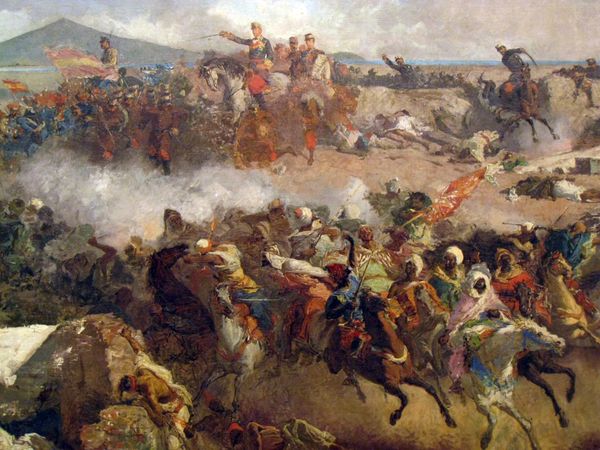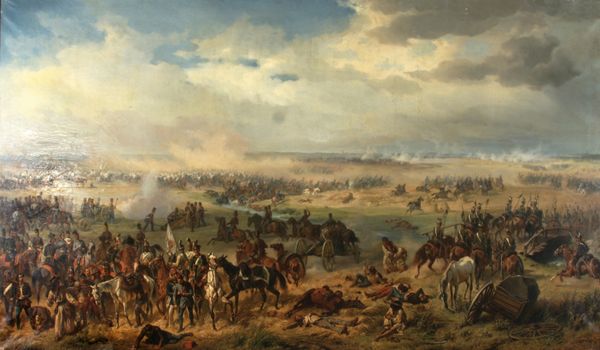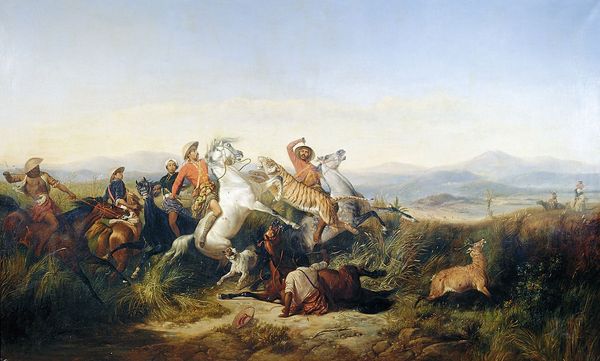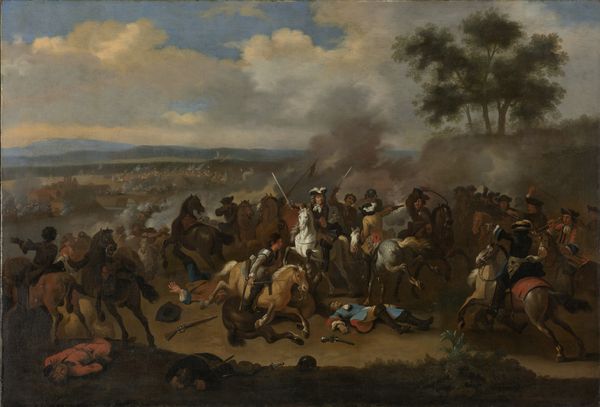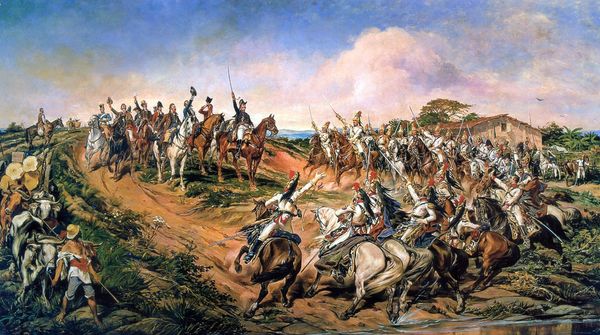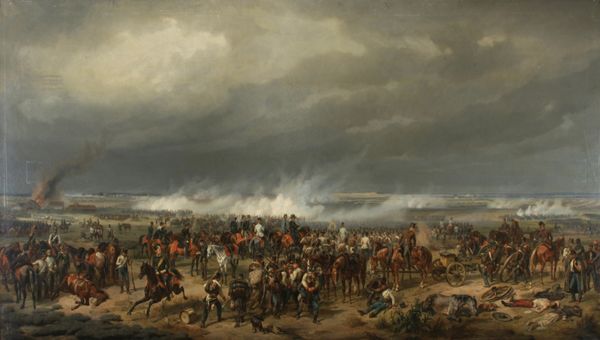
#
abstract painting
#
possibly oil pastel
#
oil painting
#
derelict
#
street graffiti
#
underpainting
#
painting painterly
#
mixed medium
#
mixed media
#
watercolor
Copyright: Public domain
Editor: So, this is a detail from Mariano Fortuny's "The Battle of Tetouan," painted in 1862. It seems to capture so much movement and chaos with those sweeping brushstrokes! What do you see in this piece from a historical perspective? Curator: From a historical viewpoint, this battle scene, while seemingly chaotic, is heavily constructed and politically charged. How do you think images like this circulated and what public role did they serve? Editor: Hmm, based on the scale, I would guess this piece was to convey some degree of national pride through a major exhibition. It's clearly staged, so did this fit within an accepted style or common trope for the time? Curator: Exactly. These battle paintings were often commissioned to promote a specific narrative, influencing public opinion about the conflict. In Fortuny’s case, Spain sought to visually dominate in post-conflict representation. How does the "painterly" technique in this depiction relate to its potential for communicating truth and accuracy about a recent military victory? Editor: That’s a great point – the looser style definitely emphasizes drama over exact representation. Perhaps it attempts to communicate more of a general feeling, making a statement about Spanish power more so than illustrating literal events. Curator: Precisely. By exaggerating and romanticizing battles, nations tried to justify their actions on the world stage. How do the choices around imagery reflect the broader socio-political currents that shaped how conflict was understood? Does Fortuny fully adopt and reinforce those "currents"? Editor: That's a really fascinating question. It highlights how artworks are really powerful tools in shaping public perception. The scale and movement certainly create an overwhelming image of Spanish forces overpowering the Moroccan armies and thus can shape nationalistic viewpoints! Curator: Absolutely. Reflecting on this work makes us realize how war imagery continues to serve ideological roles. It prompts us to see history’s lasting influences on our own times.
Comments
No comments
Be the first to comment and join the conversation on the ultimate creative platform.


